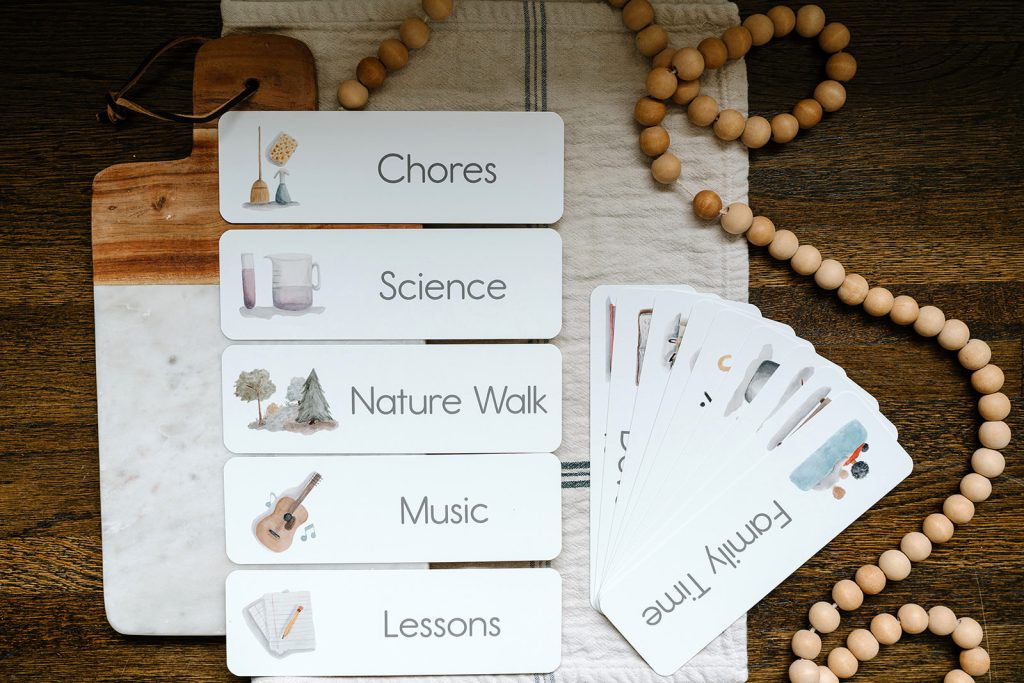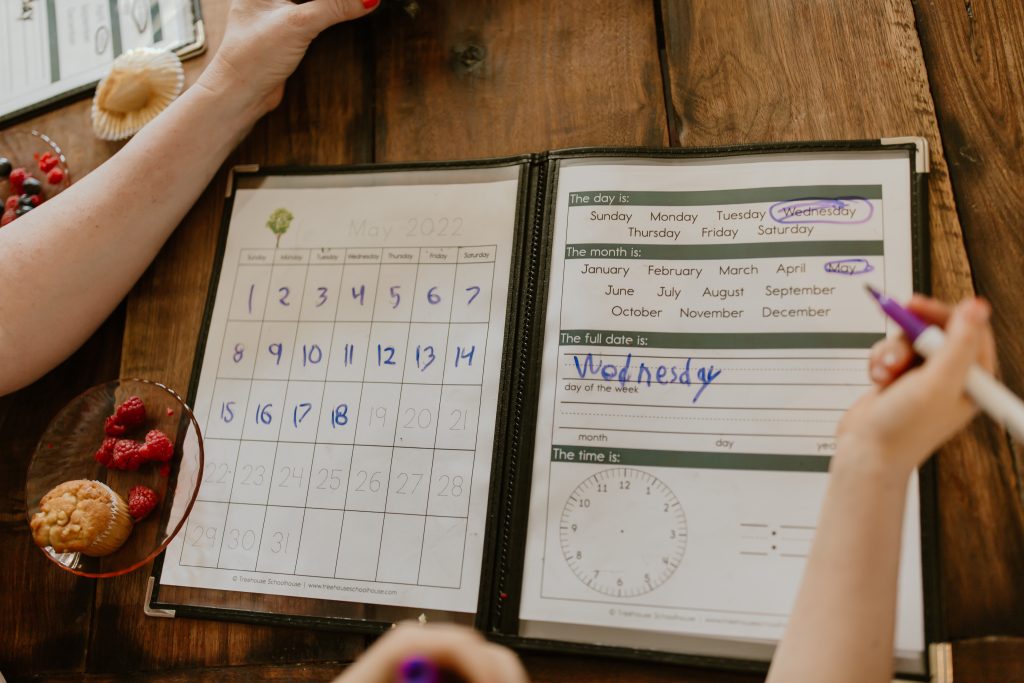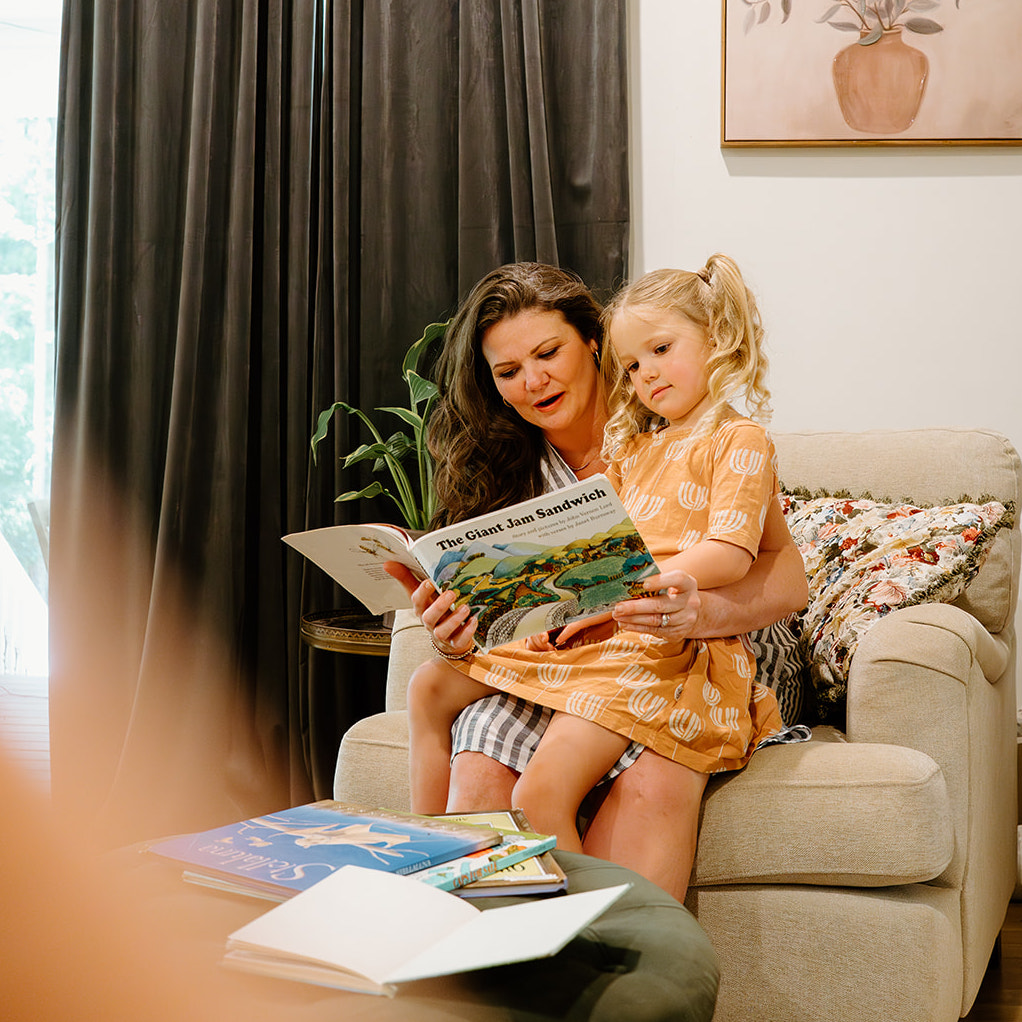In early childhood education, one of my goals is to foster a deep love for learning. For toddlers and preschoolers, one of the most powerful tools for learning is narration through play. Narration invites young children to actively process information, internalize stories, and articulate ideas in their own words. Narration transforms passive listening into an engaging experience, laying a strong foundation for critical thinking, language development, and a lifelong curiosity about the world around them.
This approach to learning is inspired by Charlotte Mason, who said narration is the primary way for children to “digest” knowledge, learning primarily from living books and rich experiences. Instead of relying on worksheets or memorization, Mason encouraged parents to read compelling stories, poems, and informational texts aloud, then simply ask, “Tell me what you heard.”
For small children under the age of six, the appropriate way to practice narration is through play. While toddlers and preschoolers may not be able to re-tell a story succinctly or explain thoughts in complete sentences, they can often engage in parts of the story through play, acting out out the story or using the story details to spark imaginative play. Play-based narration helps cultivate a love for literature because it gives small children a way to connect with the story in a tangible way.
Embracing narration in your homeschool preschool, even for small children, can cultivate retention, imagination, and the ability to connect ideas. It’s a gentle yet effective method that respects the child’s natural capacity for learning, building a robust inner world filled with vivid imagery and well-formed thoughts.
This blog post explains narration and simple ways to weave this into your homeschool, for both toddlers and preschoolers, and older children beginning narration at age 6.
In this blog post:
- What is narration in early learning?
- What is play-based narration for homeschool preschool?
- How to start and encourage oral narration
- Favorite narration resources from Treehouse Schoolhouse
What is narration in early learning?

In a nutshell, narration is “the art of telling back” what a student has read or heard. It is a method that strengthens the student’s habit of attention and secures the information in the mind. It is a skill that requires attention and more mental energy than you may think.
At the beginning stages, narration is oral. The child listens to or reads a passage or a story and then tells back what they read or heard. As the student advances, the oral narrations turn into written narrations. First, young children will start with a sentence or two. Eventually, they will write entire essays summarizing the information or story.
I first learned about narration when I had preschool-aged children. I knew that narration would be a huge part of their education. My favorite resource to learn about narration is the book Know and Tell: The Art of Narration by Karen Glass. This book helped me understand the value of narration and the steps to take to include it in our home education.
Practicing narration at an early age has brought so much joy to my family. Over the years we have enjoyed narration as a practice in our homeschool and with our community with book clubs and other activities.
What is play-based narration for homeschool preschool?

For toddlers and preschoolers, the whole idea of narration is for the child to retain the story after you read to them. Instead of asking the child to narrate a story to you after reading, gently encourage narration by offering props and toys to see if the child will narrate through play. Don’t push it, just offer it to them and watch them play and explore.
We are practicing play-based narration with Treehouse Story School: Preschool. This curriculum providers was for children to retell favorite picture books in their own words through play, hands-on activities, and more. We will use the Storytelling Pieces and props from around the house for narration. It is amazing to see children retelling stories we read through play, and see what details they remember.
Here are some examples of narration through our favorite picture books:
- Caps for Sale – After reading the story to my children I gave them a tree (a stick stuck in air-dry clay), a barrel of monkeys, a wooden doll, and some felt circles for hats. I left the book nearby for them to recall the story as they played.
- We’re Going on a Bear Hunt – We created a big map together and used peg dolls and a toy bear to play the story.
- The Little Red Hen – I pulled toys from around the house and grabbed some weeds from my yard and oats for wheat seeds. Don’t worry about having the perfect props. Use what you have or have your children help find all the characters and create the scenes.
As toddlers and preschoolers practice narration through play, it will help them transition to oral and written narration when they are older.
Treehouse Story School: Preschool includes 32-weeks of literature-based learning, including ideas for narration-based play for every week of study, plus coordinating Storytelling Pieces for each book title. This list includes some of my favorite toys to have available for play-based narration.

How to start and encourage oral narration

When I felt it was time to start oral narrations, around age 6, I started with short, engaging stories and made it fun. Don’t jump in with long, informational passages.
When my older children were small, we practiced narration with Beatrix Potter’s Complete Tales of Peter Rabbit and the short stories from Aesop’s Fables. If the story was lengthy I would read a few paragraphs, pause, and have him narrate before I moved on.
When I first asked my son to do this, he thought it was silly since I just told him the story. “You already know the story, Mom. Why do you want me to tell it to you?” he said. Other times he just didn’t want to tell it and complained. We tried a few methods to keep it fun and get him comfortable.
Here are a few ideas for gently encouraging narration:
- Narrate to a stuffed animal or toy. Let your child bring a stuffed animal or animal figure to lessons and tell the story back to his “friend.” For my children, that was key to making it fun.
- Draw the story and then tell it to you. Sometimes creating a visual will help jog your child’s memory. My son loves drawing, so sometimes he would draw as he narrated or draw and then use the picture to explain what happened in the story.
- Film the narration and watch it back. I don’t know about you, but give my child a phone to make a video, and they are happy campers. Some of the best narrations are saved on my phone because that’s how I got them to narrate!
- Call or video chat a family member or friend to narrate the story to. If your child is tired of narrating to you, try calling a close relative or friend who may be interested in hearing the story. Grandpas and grandmas across the world would surely appreciate this kind of call.
- Dramatize the story. My children love to narrate the story by acting it out. One child will be the narrator and the other will be the characters. Costumes and props are fun but totally optional.
The main ideas I want to convey here are to think outside the box and meet your child where they are. Narrating is harder than you may think. Go at your child’s pace, but challenge them little by little and you will be amazed at their attention and language skills as they grow.
As my children grew, they were able to progress from oral narration to written narration. After we read stories together, my older children will orally narrate it back to me and then tell me one or two main idea sentences from the story. I will write them on a chalkboard or on paper for them to copy them to lined paper and then illustrate the story. This was a great way to transition to longer, more thorough written narrations.
Favorite homeschool preschool resources from Treehouse Schoolhouse
Are you looking for more learning resources for your homeschool? Consider these best-selling products from Treehouse Schoolhouse that offer a gentle invitation to learning.
Treehouse Story School: Preschool

Treehouse Story School: Preschool is 32-weeks of gentle, literature-based curriculum designed for ages 2.5-5 years. This preschool curriculum that invites children to learn through the themes in stories they love. Each week will focus on a picture book, inviting children into connection and learning through music and movement, play-based narration, alphabet and number play, motor skills, practical life development, crafts, and baking together.
It would be a great fit for your toddler or preschooler if you are looking to incorporate multi-sensory, play-based learning while introducing them to timeless stories.
From toddler through upper preschool, this curriculum can be used year after year as you dive deeper into beloved, classic stories your family will cherish. Preview a free week here.
Daily Rhythm Bundle

Children are highly visual–they can feel particularly out of control when they don’t know what to expect of their day. That’s why we recommend using a visual schedule to support your children from the time they are very young.
Rather than trying to stick to a rigid schedule, this set helps you create a general rhythm for your days. The daily rhythm worksheet is laminated and dry erase and the cards can be moved around offering you flexibility and adaptability.
Morning Time Bundle

This interactive, reusable set focuses on weather, seasons, moon phase, temperature, weather-appropriate clothing, date and time, and reading a calendar. With this daily bundle, your child will practice the skills of handwriting, tracing, copywork, and telling time. I recommend you print these materials and place them inside of a Morning Time Menu or dry-erase sleeve. Using dry-erase markers, your child can fill this bundle out over and over again.
We also offer a version of the Morning Time Bundle for those in our community who live in the Southern Hemisphere.
Do you practice narration with your little ones? Let me know in the comments below.



